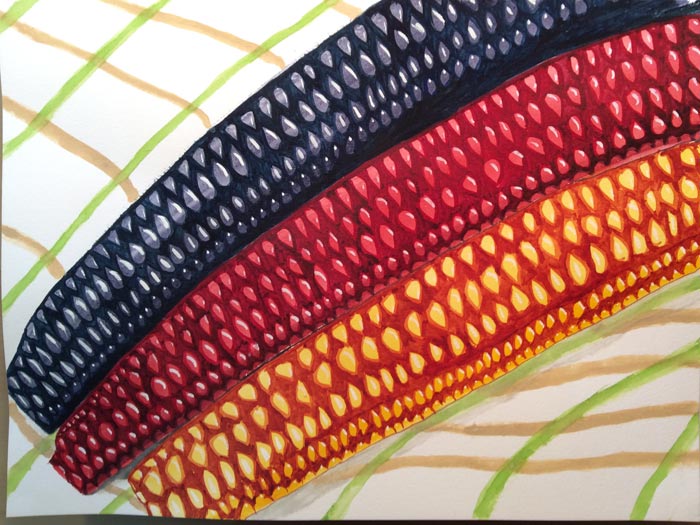
August 9, 2016
Imagine for a moment, a truly horrifying thought.
What if 3/4 of the world’s financial wealth was suddenly lost? The shock would likely kill some of us. Thankfully, it’s not so. But what about another form of wealth, the plant biodiversity of the planet? Sadly, this one is (horrifyingly) true: since 1900, 75% of the earth’s plant diversity has disappeared. But unlike with financial wealth, the lost biodiversity can’t be restored or earned back. It can only be protected from being lost in the first place.
In a real sense, that’s our story of why climate change doesn’t stir a collective panic. Too much money is at immediate stake for us to act in a rational manner against this impending disaster. Nature, in and of itself, does not move most Americans to demand action, especially on complex matters that unfold slowly over decades of time.
Preserving indigenous and traditional crops
But this post is not about money or directly about climate change. It’s to share an article that highlights the many organizations that are tirelessly trying to preserve the remaining plant species that can still be saved. The article includes a sampling of 20 Native North American and traditional crops, each with their own story to tell.
As Food Tank’s 20 Native North American Foods with Stories to Tell points out, there are a number of important reasons why we need to preserve plants like these. Not only for personal health and taste, greater amounts of plant biodiversity means better insurance against the forces of nature that can swing wildly across the globe. Many of these indigenous and early traditional crops are tolerant to heat and drought, floods, cold, and other adverse weather conditions. Biodiversity is nature’s way of not putting all its eggs in one basket. Quite literally.
There’s also some great names that accompany the list. A few examples: Bay of Fundy Dulse, “a red algae in the intertidal zone of the North Atlantic”. Candy Roaster Squash, “first bred by the Cherokee tribes of the southern Appalachian Mountains in the 1800s.” Wild Ramps, a perennial wild onion that grows in Eastern North America.
As we become more familiar with these foods, we help keep them alive for future generations. And, that’s important not only for humans, but the planet, as well.
